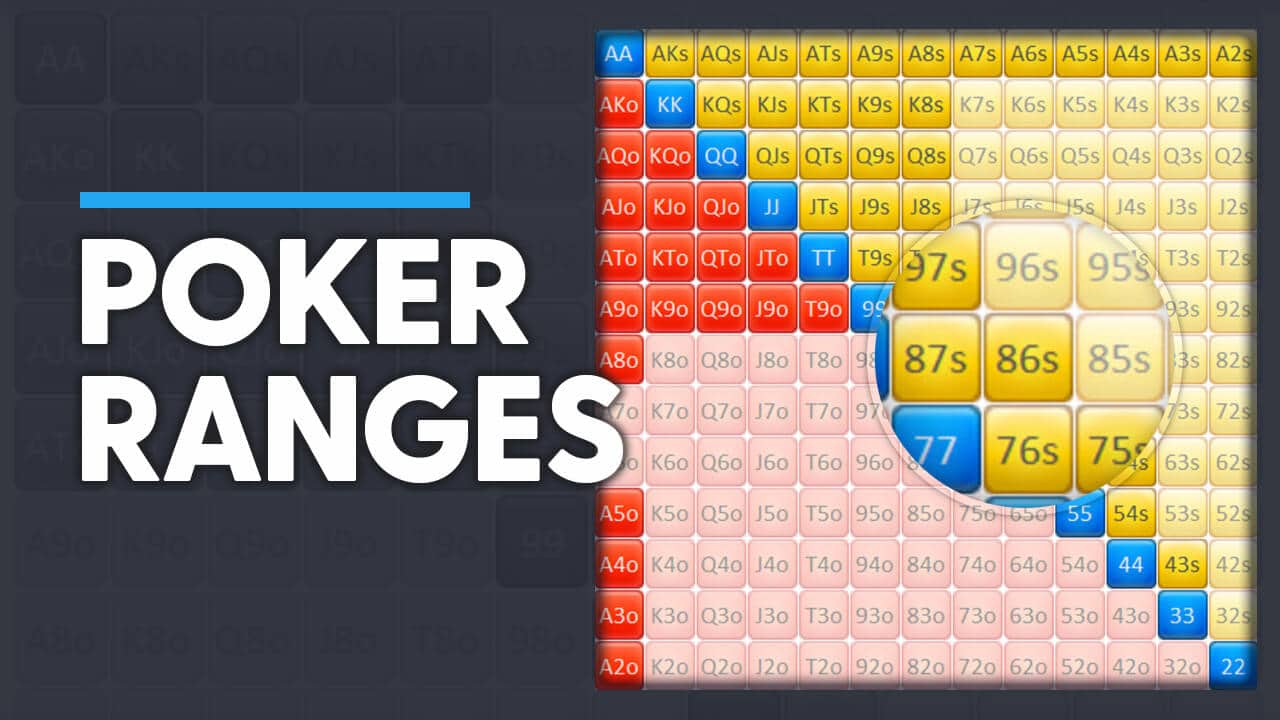Poker When To Raise
Understanding when you need to raise helps you create your chips set easily. Raising makes the pot to grow because you will have to bet more chips. This happens because your rival bets a certain amount, and you kick the ball back to them by placing more bets, rather than folding or calling. It is a powerful but risky weapon since you put more chips in danger.
The Value of Position
It is important to know the significance of position in the game of poker. Poker experts often want to know a participant's position of betting relative to their rivals when they are appraising hands. Such knowledge is more critical than cards in deciding the winner. The three kinds of positions are late, middle, and early. Once you understand the poker positions, you will improve your judgment in calling or raising.
Also, knowledge of positions helps you to be aware when you are in a weak or strong position. Players in the early positions are in a weak spot since they play ahead of their rivals. But, late participants are in a stronger position because they have extra information that helps them make better decisions. Therefore, most people anticipate that people in late positions will win.
When to Raise
Being the last participant ahead of blinds is highly beneficial. A late participant gets a better picture of the game after observing a series of decisions. The information gathered would help the player decide whether to raise. Below are the rules you need to remember when to raise and why you need to raise.
1. Raising to protect your hand or reduce the field
If a player has a stronger hand, they are assured of victory when the showdown happens immediately. The dilemma is, if they are at the flop, there remain two cards and their rival may pull a flush. When your rival puts a bet that says 'I've got a fantastic hand,' you need to raise.
Moreover, you can also raise a hand when you want to lower the number of rivals. For instance, if you are carrying a set of Aces at the hole, then that will be your best hand at that point. However, you need to note that if more than four rivals enter the pot, your flight tickets won’t be your best choice any further. Therefore, you need to raise to lower the field and enhance your winning chances.
2. Raising to win more or when in the bluff
Any time a player has the best winning hand; their goal is to optimize their returns. If your rival doesn't seem to hit something great on the flop, then, you need to remind them that they have a losing hand when you raise. You can also raise when the flop appears like it might create a flush or a straight when paired with your cards in the hole.
3. Raising to get information.
It is advisable not to raise too much; you need to raise when you want to reduce the field and when your opponent's hand seems weaker than yours, but not capable of weakening your stack. Most times, you will know what your opponent holds; your competitor would either call or fold and you secure the pot without stress. When they call, you know the best side is on you. But, when your rival raises, it is better to reduce the damage and preserve your residual stack.
Once you understand when to call or raise, it becomes easier to detect when your rivals are bluffing. Consequently, it makes it possible to have a clue on a competitor to call and trap them as they bluff from a late spot – remember that it's a more sophisticated tactic relative to the above descriptions. Ultimately, deciding when to call or raise is primarily dictated by position- apply the rules offered in this article to make sure you understand when raising will be better. If you want to put your recently acquired poker skills, then visit your preferred website and give it a try.
- Poker Raise Rules
- Poker When To Raise Blood Pressure
- Minimum Raise Poker
- When To Raise Poker
- Poker When To Raise Hdl Cholesterol
- Poker When To Raise Hdl
Whenever I reviewed sit n go hand histories or sweated one of my horses, one of the sit n go strategies I always suggested they try was the min-raise.
To raise is to increase the size of an existing bet in the same betting round. A player making the second (not counting the open) or subsequent raise of a betting round is said to re-raise. A player making a raise after previously checking in the same betting round is said to check-raise. Preflop poker strategy Tip 3: Take the initiative and be aggressive. Bet and raise your strong hands frequently and don’t rely on others to do the betting for you! The four playing styles. In total there are four player styles: Tight-Aggressive (TAg) – This player type which makes up the majority of the winning player pool.
Many players don’t agree with the min-raise. The reasons usually fall under the scope of you won’t have any fold equity because it’s so cheap for people to call.
I disagree (obviously) with the naysayers. I know from experience that min-raising works. You just have to know when to do it. It probably helps to know why, too.
When to Min-Raise in a Sit n Go Tournament
Poker Raise Rules
One of the keys to min-raising successfully is knowing when to do it.
You don’t want to min-raise until you get to the 100/200 level. The rounds before this, everyone will be deep enough to where a min-raise won’t have that much fold equity. Not only that, but you won’t be stealing nearly as often as you will be in the later stages. In other words, you’ll be playing (fewer) stronger hands that you want to get value for so you can build a big stack. So you’ll definitely want to 3-4x your raises earlier on.
Why Min-Raising Works
Min-raising works for numerous reasons:

- Most stacks are going to be shallow enough to where you have fold equity. They can’t afford to call you light preflop because too often they’ll have to fold to a c-bet postflop.
- To random / fishy players, a min-raise looks extremely strong, as if you want action.
- Players who don’t know optimal strategy tighten up drastically during these stages because stack sizes are either short or near 10-15 big blinds, and depending on the game you’re playing, you might be near the bubble.
The bottom line is that most players don’t know how to adjust during the later stages, nor do they know how to react or interpret a min-raise. So you’ll get more folds than you probably think that you will

That said, I do want to point out that, like always, poker is situational. So if you’re min-raising and you’re not getting folds or you cannot c-bet profitably (you c-bet and have to give up and/or are committed), then you need to change up your strategy. Min-raise for value or raise bigger and make it look like you’re committed. Don’t keep doing the same thing if it’s not working.
How Min-Raising is Profitable

Another benefit to min-raising is that it’s very profitable. After all, you’re risking less to win (more). This will affect you both pre and postflop.
Preflop you’ll notice smaller gains, especially before antes. But they’re still there. For example, say the blinds are 100/200 with no antes. That would put 300 chips in the pot. A min-raise would be 400. If you have to fold, you only lose 100 chips. But if you did a standard 3-4x raise, every time you folded you’d lose 200 to 400 chips. That’s a big difference, especially if you look at how it adds up over the course of a session, week, month, year, etc.
With antes, you’re given a lot more slack. For example, during the same level with antes (25), the pot would be 525. So now with a min-raise you’re now risking less to win the money in the pot. However, if you were to 2.5x you’d nearly break even, and a 3x would put you at risking more than what you stand to win.
The moral of the story? One, min-raising allows you to wager less to earn more, increasing your margins regardless if you win or lose. Two, min-raising is more effective when there are antes.
Poker When To Raise Blood Pressure
Dealing With Re-Shoves
Another benefit to min-raising preflop is that you put less money in the pot. This is good because at the later stages of the tournament, the pot is bloated with dead money already due to the blinds and antes (when compared to stack sizes). This makes it extremely profitable for players to re-ship on raises. However, the less money you put in the pot, the worse the odds it is for someone to re-shove on you. So, you’ll have to fold (to re-shoves) less often, giving you more opportunities to steal the blinds. Win-win.
Continuation Bets Are Cheaper
Continuation bets will be the same way. The smaller your bets preflop, the smaller the pot is postflop. That means your c-bets will also be less.


Minimum Raise Poker
For example, say you bet 600 chips preflop at 100/200 without antes. You got one caller and the blinds folded. The pot would be 1500. A c-bet here would have to be around 1,000 chips. So you’re investing 1,600 chips in this hand. That can be a massive blow to your stack and tournament equity if you end up having to fold.
When To Raise Poker
Now consider this. Say you min-raised instead. There would only be 1100 chips in the pot. A continuation bet here would be around 750 chips for a total investment of 1150 – 450 chips less! That’s a huge difference when you consider that 450 chips can be the equivalent to 10-20% or more of your existing stack
The moral of the story? Min-raising has a positive compounding effect that cannot be ignored.
Use the Min-Raise Wisely
Poker When To Raise Hdl Cholesterol
The min-raise works in sit n go’s. I hope you see that by now.
But that’s not the key takeaway, at least not the primary one.
Poker When To Raise Hdl
The takeaway here is that using a strategy that others don’t agree with, use or understand is the out of the box thinking that can separate yourself from your competitors, as well as propel your ROI to heights seen by few players at your games and stakes.
But on top of thinking outside the box you also need to know when to use the strategy, which means knowing what opponents to min-raise against, when and how to adjust the strategy when it stops working. Once you get the hang of all of this, I guarantee that you’ll find min-raising to be a massively profitable betting strategy.